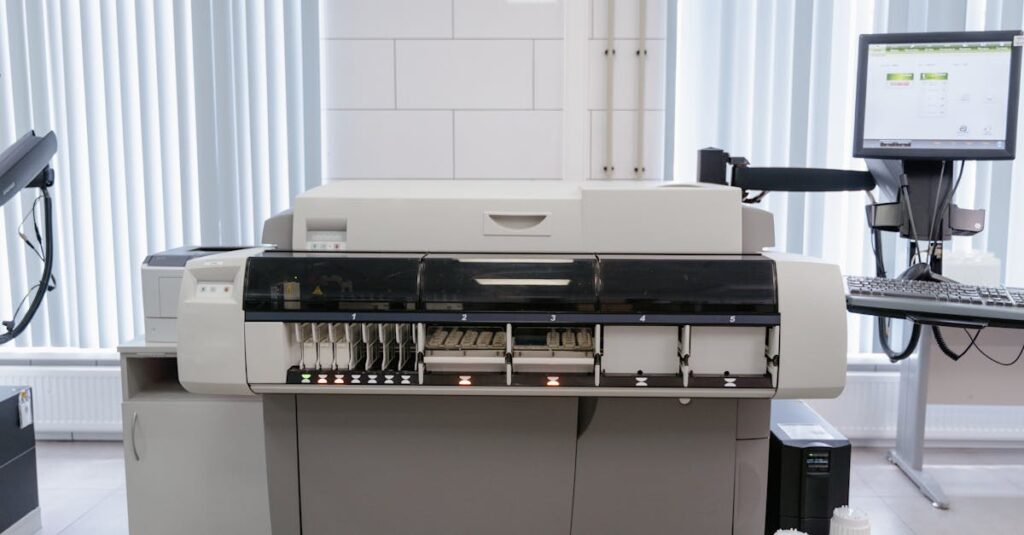The Growing Presence of Automation in Our Workplaces
If you’ve ever used an app to track your steps, ordered coffee through a kiosk, or had a conversation with a chatbot, you’ve interacted with automation. It’s no longer a buzzword, it’s reshaping how we work. Automation is showing up in all kinds of workplaces, transforming industries from healthcare to finance, education, and beyond. But what does this mean for us as workers? Will it take our jobs, or is it here to make life easier?
The truth lies somewhere in between. In this article, we’ll explore how automation is changing the workplace, from improving efficiency to helping employees focus on more meaningful tasks. We’ll also look at some real-life examples and challenges that come with it.
Automation in the Workforce: More Than Just Robots
When most people think about automation, images of robots in factories often come to mind. While robots certainly play a big role in some industries, automation isn’t just about machines performing physical tasks. It’s also about software and systems working behind the scenes to simplify or even take over repetitive or time-consuming tasks.
Take a typical office environment, for example. Many companies now use automated systems to handle tasks like scheduling meetings, sorting emails, or tracking project progress. Rather than wasting time on routine tasks, employees can focus on the more creative or strategic aspects of their work.
Case Study: How Automation Streamlined Operations at a Tech Firm
At a growing tech startup, the HR team faced a mountain of administrative tasks: processing job applications, scheduling interviews, and onboarding new hires. The team spent hours a week just handling paperwork and manually entering data into the company’s system.
Then, they implemented an HR automation platform. This system automatically parsed resumes, scheduled interviews based on availability, and even sent out offer letters and onboarding materials without the need for any manual intervention. The result? The HR team could focus on making better hiring decisions and fostering a positive work culture instead of getting bogged down in administrative work.
This is just one example of how automation can free up human potential for more meaningful and creative work. And it’s a trend that’s growing across industries.
Benefits of Automation for Employees
Now that we understand how automation works, let’s look at the key benefits it brings to employees. Automation can provide more time for people to do what they do best, think critically, innovate, and solve problems.
- Increased Productivity: Automation removes the need to manually complete repetitive tasks, which can drain your energy and time. Whether it’s entering data into spreadsheets or managing customer inquiries, machines can handle it, leaving you more time to work on high-impact activities.
- Improved Job Satisfaction: Nobody wants to be stuck doing the same boring task day in and day out. With automation handling routine work, employees can focus on tasks that challenge their creativity and problem-solving skills, which can improve overall job satisfaction.
- Fewer Errors: Humans are prone to making mistakes, especially when doing tedious, repetitive work. Automation helps reduce errors by performing tasks with precision and consistency, which ultimately leads to better results.
Example: How Automation Saved Time for Customer Service Representatives
Imagine working in customer service where you’re constantly answering the same questions. A new software tool uses automation to direct common queries to a knowledge base and only sends the more complex issues to human agents. This system not only reduces the number of tickets agents have to handle but also speeds up response times for customers. Instead of answering routine questions, the representatives can focus on resolving more complicated or high-priority issues, improving both customer satisfaction and their own job enjoyment.
Challenges of Implementing Automation in the Workplace
As great as automation sounds, it’s not all smooth sailing. There are challenges that companies and employees face when integrating automation into their workflows.
- Job Displacement: The biggest concern about automation is the fear that it will replace jobs. For many roles, especially those focused on repetitive tasks, machines may be able to do the work faster and more accurately. However, this doesn’t necessarily mean the end of human workers. While automation may change certain jobs, it also creates new opportunities in tech and maintenance roles.
- Initial Investment: Setting up automation systems requires upfront investment, both in terms of money and time. For small businesses or companies with limited resources, this can be a tough pill to swallow. However, the long-term benefits often outweigh the initial costs as automation leads to more efficient operations and lower labor costs.
- Change Management: Adapting to new technology can be a challenge, especially for employees who may feel overwhelmed or uncertain about automation. Training is essential for employees to use new systems effectively. Successful change management ensures that employees are not left behind and feel confident in their new roles.
Example: Overcoming Resistance to Change in a Retail Store
A popular retail chain decided to implement automated checkout kiosks to reduce long lines and improve customer experience. However, the staff was initially hesitant, fearing it would replace their roles. To overcome this, the company provided comprehensive training, showing how the kiosks would simply enhance their work rather than replace it. Employees were encouraged to take on more customer service duties, which ultimately helped improve their job satisfaction and increased sales. The company found that automation didn’t lead to job loss, it led to a more skilled and customer-focused workforce.
The Future of Work: Humans and Automation Working Together
The future isn’t about humans versus machines, it’s about collaboration. Automation will continue to play a key role in modern workplaces, but it’s crucial to remember that technology is only as effective as the humans behind it.
As automation handles more repetitive tasks, employees will have more opportunities to engage in creative, strategic, and higher-level decision-making. For example, a marketer might use automation tools to track customer behavior and generate reports, but it’s the human element that will interpret the data and create compelling campaigns. In this way, automation can enhance human capabilities, not replace them.
It’s clear that automation is reshaping the workplace, and while it does bring challenges, it also presents a wealth of opportunities. The key to success lies in how we adapt and embrace these new tools. By upskilling, staying open to change, and focusing on the human side of work, we can build workplaces that are both efficient and fulfilling.
Conclusion: Embrace the Future of Work
The workplace of tomorrow won’t be a battle between humans and machines, it’ll be a partnership. Automation is here to stay, and while it’s important to be mindful of the challenges it brings, it’s equally important to embrace the benefits it offers. The future of work is about finding the right balance between human creativity and machine efficiency, and when we get that balance right, the possibilities are endless. So, whether you’re an employee or an employer, think of automation as a tool that can unlock new potential and make your work life better.

